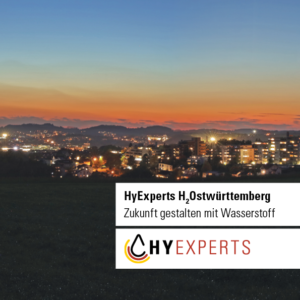HyExperts II: H2Ostwürttemberg

The region of Ostwürttemberg is formed by the district of Ostalb and the district of Heidenheim. The 447,000 inhabitants are scattered among 53 cities and municipalities. Ostwürttemberg is the economic region that is home to Germany’s oldest industrial enterprise. The region has continuously developed and reinvented itself time and again. This is why an economic region with a focus on manufacturing and logistics has emerged here, which excels in creativity, innovation and performance. Today, the region is a patent stronghold and regularly proves that it is rightly considered the region for “talents and patents”. With the transformation of mobility towards emission-free and more sustainable forms of propulsion, companies and people have to face the changes taking place in traditional industries. The H2Ostwürttemberg project seeks to play an active role in shaping this change.
- Development of a climate-neutral technology park with electrolysis plant
- Climate-friendly supply of heat to a new urban district and production of hydrogen
- Development of a logistics network and operation of hydrogen-powered commercial vehicles
- Establishment of a further education and training programme based on hydrogen technologies
- Raising the awareness among the general public for the topic of hydrogen
- Detailed studies on the economic and ecological selection of locations for hydrogen refuelling stations
- Industrial concepts for the use and production of hydrogen
District of Ostalb – District of Heidenheim – City of Schwäbisch Gmünd
Michael Hueber
District Office Ostalbkreis
michael.hueber@ostalbkreis.de
+49 7361 503-1198
Peter Kruppa/ © WiRo


